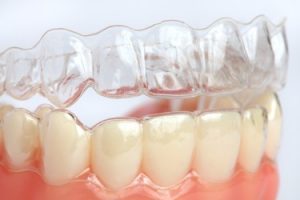- Home
- Editorial
- News
- Practice Guidelines
- Anesthesiology Guidelines
- Cancer Guidelines
- Cardiac Sciences Guidelines
- Critical Care Guidelines
- Dentistry Guidelines
- Dermatology Guidelines
- Diabetes and Endo Guidelines
- Diagnostics Guidelines
- ENT Guidelines
- Featured Practice Guidelines
- Gastroenterology Guidelines
- Geriatrics Guidelines
- Medicine Guidelines
- Nephrology Guidelines
- Neurosciences Guidelines
- Obs and Gynae Guidelines
- Ophthalmology Guidelines
- Orthopaedics Guidelines
- Paediatrics Guidelines
- Psychiatry Guidelines
- Pulmonology Guidelines
- Radiology Guidelines
- Surgery Guidelines
- Urology Guidelines
Helping dental retainers and aligners fight off bacteria

Clear, plastic aligners have been growing in popularity as alternatives to bulky, metal braces. And once the teeth are straightened, patients graduate to plastic retainers to maintain the perfect smile. But these appliances can become contaminated, so one group is now reporting in ACS Applied Materials & Interfaces that they have developed a film to prevent bacteria from growing on them.
According to the American Association of Orthodontists, more than 5 million people seek orthodontic treatments each year. These procedures include braces and aligners, a set of plastic pieces that shift the teeth slightly over time, in an attempt to fix crowded jaws, over- and under-bites and improperly aligned teeth. Clear aligners or retainers, known collectively as clear overlay appliances (COAs) are made by taking a dental cast and using pressure or heat on a plastic sheet. But bacteria frequently build upon COAs as difficult-to-treat biofilms, and the plastics easily wear down. Scientists have turned to developing simple and affordable coatings to combat this. Drawing inspiration from super-hydrophilic antibacterial coatings on other medical devices, Hyo-Won Ahn, Jinkee Hong and colleagues wanted to see if they could make something similar for COAs in the unique oral environment.
The researchers took a polymer sheet made of polyethylene terephthalate that was modified with glycol (PETG) and layered films of carboxymethylcellulose and chitosan on it. This layered film created a super-hydrophilic surface or a surface that loves water, that prevented bacteria from adhering. When PETG with the film was compared to the bare material, bacterial growth was reduced by 75 percent. The coated plastic also was stronger and more durable, even when tested with artificial saliva and various acidic solutions.
For more details click on the link: DOI: 10.1021/acsami.8b04433

Disclaimer: This site is primarily intended for healthcare professionals. Any content/information on this website does not replace the advice of medical and/or health professionals and should not be construed as medical/diagnostic advice/endorsement or prescription. Use of this site is subject to our terms of use, privacy policy, advertisement policy. © 2020 Minerva Medical Treatment Pvt Ltd